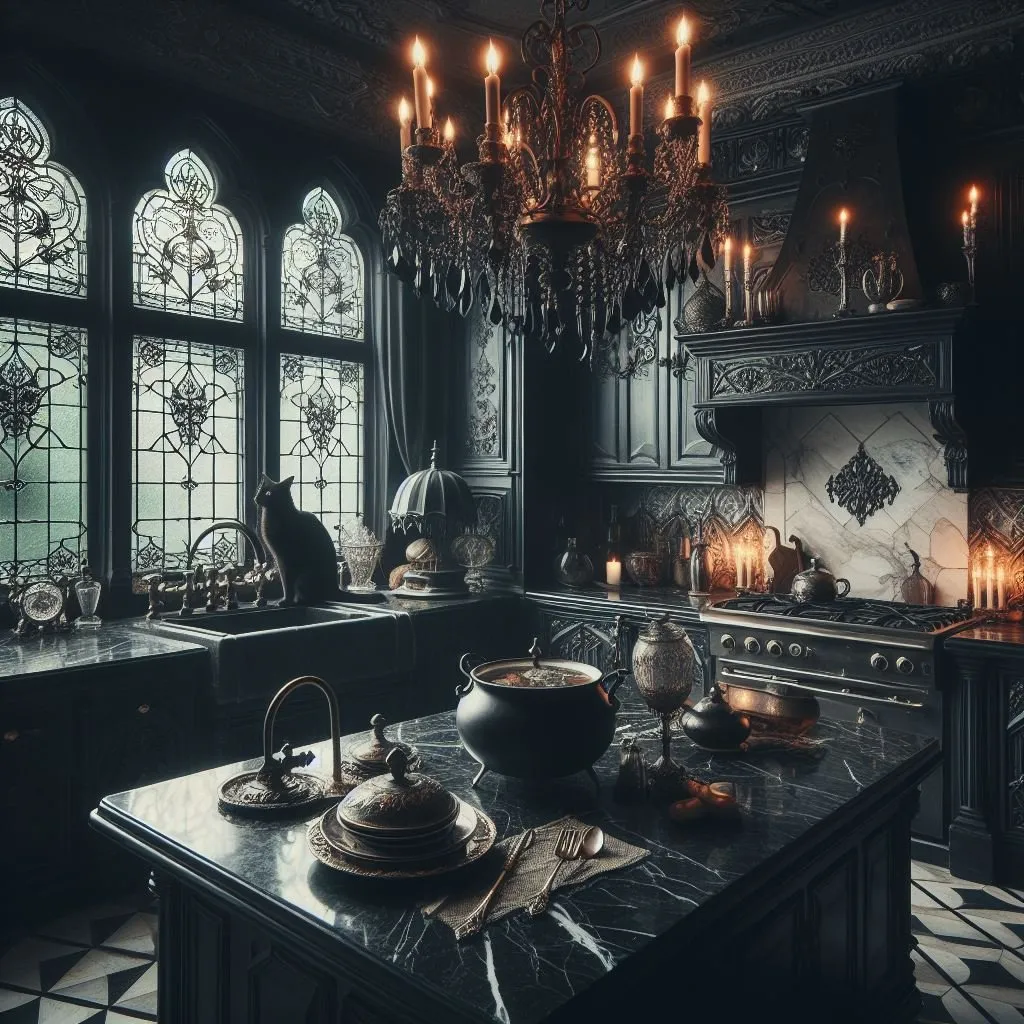Gothic Kitchen Decor Ideas That Amaze
Transforming your kitchen into a gothic haven is a bold and rewarding design choice. The gothic aesthetic, with its dramatic flair and timeless elegance, can be surprisingly adaptable to modern living. Combining this style with the warmth of yellow and the sophistication of grey creates a unique and inviting space. This guide explores how to achieve a stunning gothic kitchen, focusing on key elements and color combinations to help you create a kitchen that amazes and inspires. Get ready to embark on a journey that blends history, artistry, and contemporary design.
Embracing the Gothic Aesthetic
The gothic aesthetic is characterized by its dramatic flair, intricate detailing, and a sense of timelessness. Gothic design is not just about the dark and mysterious; it’s about incorporating elements that evoke a sense of history and artistry. Think of the grand cathedrals of Europe, with their soaring arches, stained-glass windows, and ornate carvings. The goal is to translate these features into a functional yet visually striking kitchen space. Consider the use of rich textures, statement pieces, and a carefully curated color palette to set the stage for your gothic kitchen transformation.
Key Elements of Gothic Design
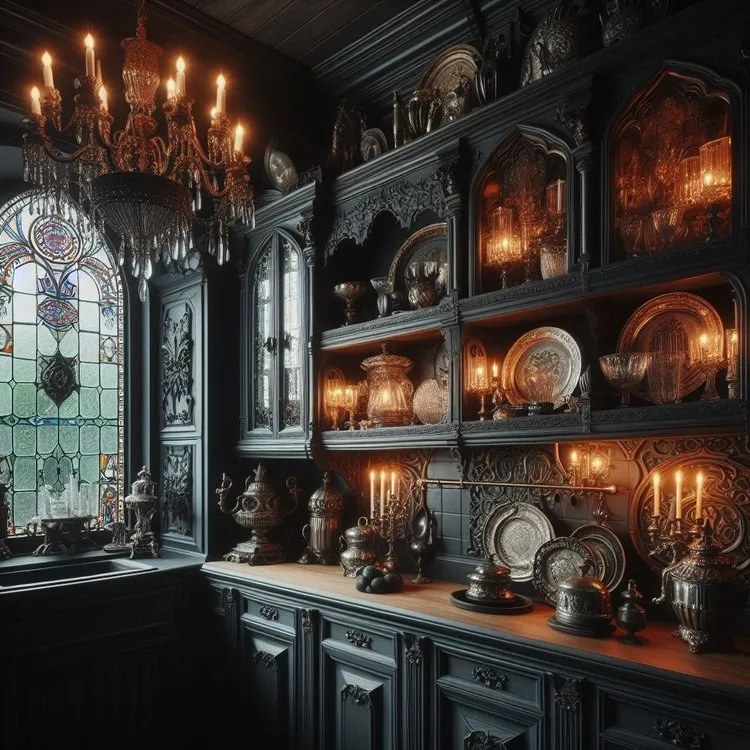
To successfully embrace the gothic aesthetic, focus on key elements that define this unique style. Architectural details like pointed arches, often seen in doorways or incorporated into cabinetry design, are hallmarks of gothic architecture. Use wrought iron accents in light fixtures or hardware to add a touch of classic gothic charm. Incorporate dramatic textures through materials like velvet or damask fabrics for window treatments or cushions. The use of stained glass, even in small doses, can bring in that essential gothic feel, creating an interplay of light and shadow. The aim is to build a space that is both functional and evocative.
Incorporating Yellow and Grey
While the gothic style is often associated with dark tones, the combination of yellow and grey can breathe new life into this design. Yellow adds warmth, brightness, and a modern touch to the space, while grey provides a neutral backdrop that balances the intensity. The key is to strike the right balance between these colors, ensuring that neither overpowers the other. This approach allows for a more contemporary feel while retaining the gothic spirit. It’s a creative way to incorporate a touch of modernity without losing the classic gothic flair.
Color Palette Harmony
Creating a harmonious color palette is essential. Start with a base of grey – consider a light to medium shade on walls and larger surfaces like cabinetry. Introduce yellow through accent pieces, such as kitchen accessories, artwork, or even a feature wall. You can also use different shades of yellow, from pale to mustard, to add depth. Use black or deep charcoal accents to create contrast and ground the design. Remember, the goal is to create a balanced and visually pleasing space that captures the essence of gothic design while using a modern color palette.
Selecting Yellow Tones
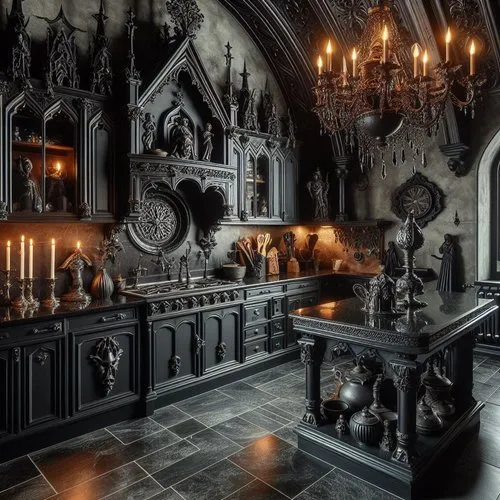
When selecting yellow tones, consider the mood you want to create. For a subtle touch, choose pale yellows, such as cream or buttercup, which can brighten the space and complement the grey. If you are looking for a more dramatic effect, use richer yellows like mustard or gold, preferably in moderation, to avoid overwhelming the space. These bolder shades can be incorporated into accent pieces, such as backsplashes or kitchenware. The choice of yellow tones will significantly impact the overall atmosphere of the kitchen, so take the time to find shades that resonate with the aesthetic you want to achieve.
Choosing Grey Shades
Grey provides an excellent foundation for a gothic kitchen. A lighter grey can make the space feel more open and airy, while a darker grey can create a more intimate and dramatic atmosphere. Consider using a warm grey with hints of brown or beige to introduce warmth and complement the yellow accents. Alternatively, cool grey tones can provide a sleek, modern backdrop. Experiment with different shades of grey on walls, cabinetry, and countertops to see what works best in your kitchen. The interplay of light and shadow will be enhanced by the careful selection of grey shades, adding to the gothic ambiance.
Furniture and Fixtures
Furniture and fixtures play a crucial role in achieving the gothic look. Choose pieces that echo the style’s key characteristics, such as ornate details and strong lines. Kitchen islands with intricate carvings or a dark finish can be stunning focal points. Opt for chairs with high backs and possibly upholstered in velvet or other luxurious fabrics. Incorporating wrought iron elements into your furniture, such as table legs or chair frames, can add a touch of authenticity. It is about finding pieces that balance functionality with the dramatic appeal of the gothic aesthetic.
Gothic-Inspired Cabinetry
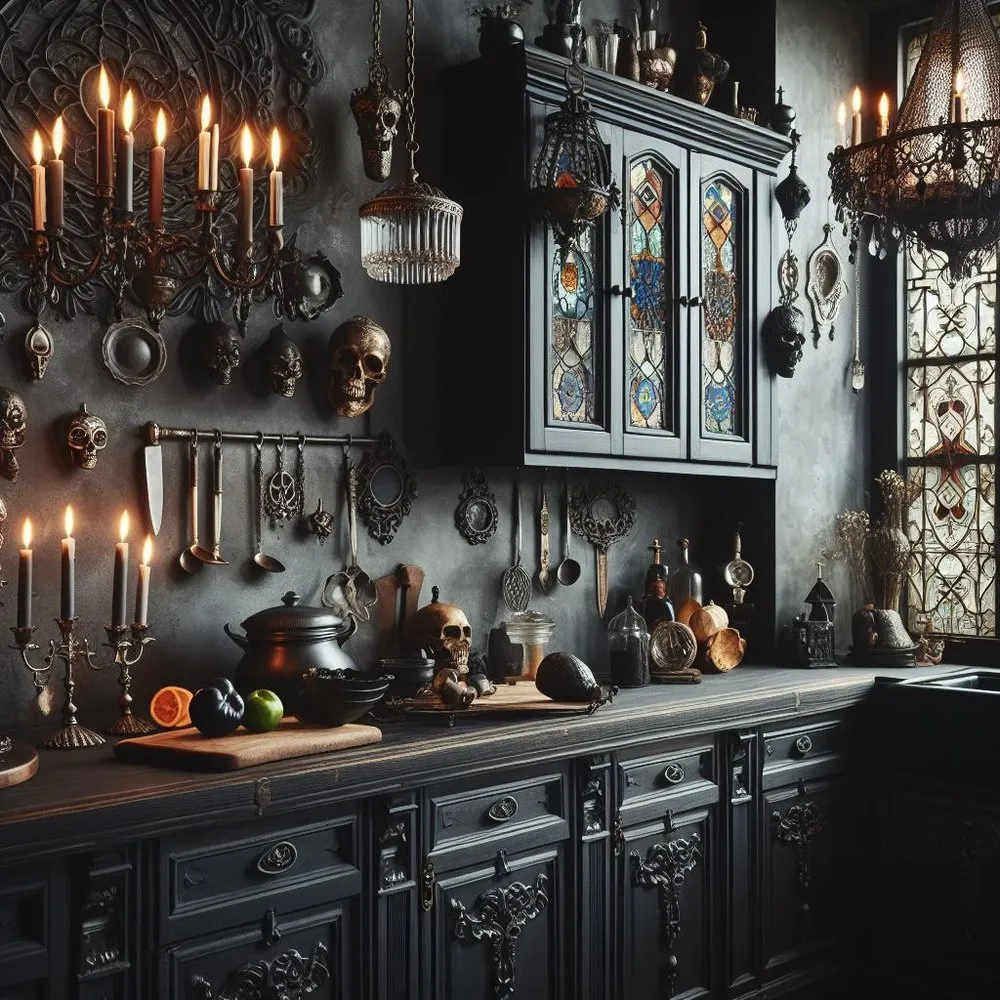
Cabinetry can significantly influence the overall gothic aesthetic. Consider cabinets with intricate paneling, arched doors, or dark, rich finishes. A black or dark grey paint can create a dramatic effect, while incorporating wrought iron hardware can enhance the gothic feel. For a softer approach, consider cabinets with a distressed finish, which will add character and create a sense of history. Display some open shelving with gothic-inspired corbels, to showcase antique china or decorative items. Remember that the goal is to blend functionality with the distinctive style of gothic design.
Selecting Countertops
Countertops provide a chance to introduce both functionality and style. Choose materials that complement the overall gothic design, such as granite or marble with dark veining. These materials offer a luxurious look and feel that aligns with the gothic aesthetic. Dark-colored countertops, like black or charcoal, can create a striking contrast against lighter cabinetry. If you want to incorporate yellow, consider a yellow-toned stone or consider adding yellow-toned accessories to tie the kitchen design together. Your choices should create visual interest, enhancing the gothic charm of your kitchen.
Lighting and Ambiance
Lighting is crucial for setting the mood in a gothic kitchen. Choose fixtures that reflect the historical and artistic elements of the style. Think of elegant chandeliers, pendant lights, and candle holders that cast a warm, inviting glow. Use dimmable lights to create a range of atmospheres, from bright and functional to soft and dramatic. These lighting features will not only illuminate your workspace but also add to the visual richness and the overall gothic atmosphere. Consider layering your lighting – a combination of task, ambient, and accent lighting – to achieve the perfect balance.
Chandeliers and Pendant Lights
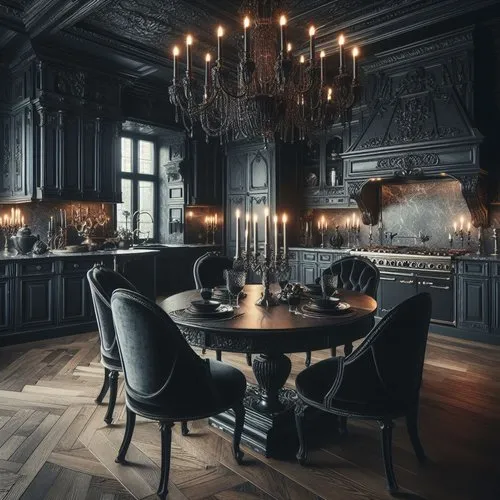
Chandeliers and pendant lights are statement pieces that can define your gothic kitchen. Opt for chandeliers with intricate designs, wrought iron details, or crystal accents. These fixtures can serve as the focal point of the space, adding elegance and drama. Pendant lights, especially those with a vintage or antique appearance, can be used over the kitchen island or countertops to provide task lighting. Combining these elements can create a balance between functionality and style. Choose lights with a warm glow to enhance the inviting ambiance.
Candle Holders and Lanterns
Candle holders and lanterns are essential for adding authentic gothic touches to your kitchen. Use wrought iron candle holders on countertops and shelves to create a warm, inviting glow. Place lanterns around the kitchen for a sense of mystery and ambiance. The soft light from candles and lanterns creates an intimate and dramatic atmosphere. Incorporate various sizes and styles to add visual interest. These lighting elements are not only practical but also enhance the gothic aesthetic. The gentle flicker of candlelight is a perfect complement to the gothic style’s romanticism and drama.
Decorating with Gothic Accents
Adding gothic accents allows you to infuse personality into your kitchen design. This includes everything from mirrors and artwork to textiles and decorative objects. These smaller details help establish the overall theme and make your kitchen uniquely yours. From the grandeur of ornate mirrors to the subtle charm of carefully selected textiles, each element contributes to the creation of your gothic kitchen’s character. These accents are the personal touches that complete the space and make it stand out.
Ornate Mirrors and Wall Art
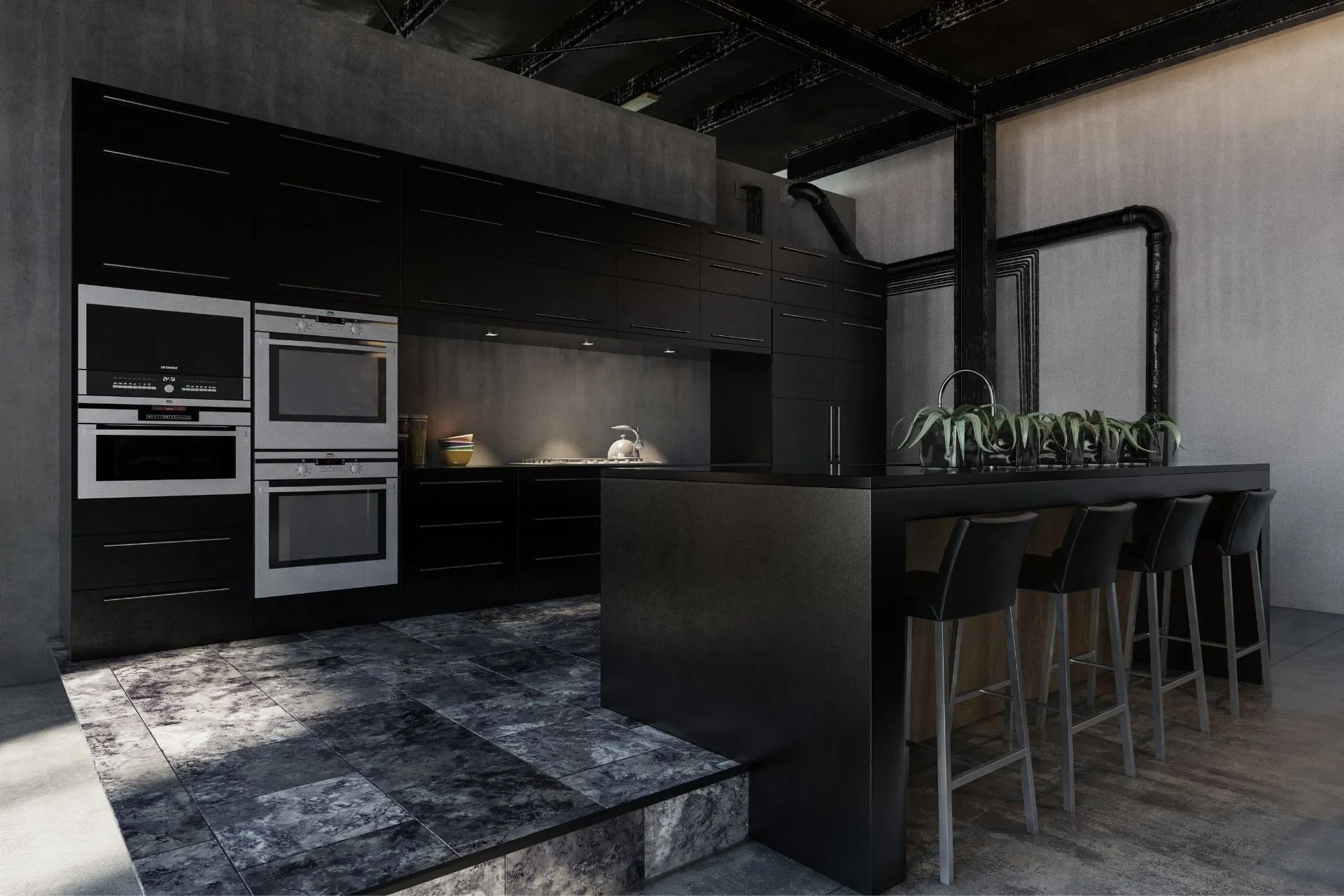
Ornate mirrors are a perfect way to add gothic flair and create the illusion of more space. Choose mirrors with elaborate frames, potentially featuring carvings or dark finishes. Place a large mirror above the stovetop or on a prominent wall to add depth and reflect light. Wall art featuring gothic themes, such as historical figures, landscapes, or abstract designs, can enhance the overall theme. Incorporate dark and dramatic artwork, and arrange it strategically to add visual interest. The artwork should complement the other elements in the kitchen, creating a unified and cohesive design. Choose artworks that evoke the gothic spirit.
Textiles and Fabrics
Textiles can soften the overall aesthetic, adding texture and warmth to your gothic kitchen. Use velvet or damask fabrics for window treatments or seat cushions to introduce a sense of luxury. Consider using patterned fabrics that complement the yellow and grey color scheme, such as damask or brocade. These fabrics can add an element of richness and depth to the design. Incorporate rugs with gothic patterns and textures to create a welcoming and visually interesting space. By carefully selecting textiles, you can add warmth and personality to your gothic kitchen.
Creating the Perfect Gothic Kitchen
Designing a gothic kitchen in yellow and grey is an exercise in creativity, balance, and attention to detail. By incorporating key elements such as ornate fixtures, dramatic lighting, and the right color palette, you can transform your kitchen into a captivating and stylish space. Start by identifying the features that define gothic design. Experiment with different shades of yellow and grey to find the perfect harmony. The aim is to create a kitchen that is not only functional but also a visual masterpiece, reflecting the timeless beauty of the gothic aesthetic. With careful planning and execution, your dream gothic kitchen can become a reality.
